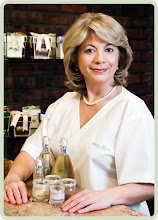Exposure to environmental toxins is a major cause of premature aging and serious diseases, including cancer. Luckily, there’s a lot you can do to minimize your risk, including eating organically grown foods, avoiding cigarette smoke and industrial pollutants—and choosing skin-care products that meet the highest standards of purity. Here’s why…
Why the Quality of Your Cosmetics Is a Matter of Health
Numerous scientific studies confirm that our skin serves as major port of entry for potentially dangerous topical skin-care ingredients. In fact, many experts believe that swallowing these chemicals is actually less dangerous than absorbing them through our skin. While powerful enzymes often detoxify ingested chemicals in our digestive tract, those that enter our bloodstream through the skin retain their full potency.
Unfortunately the protective barrier formed by our skin isn’t leak-proof. The permeability of the skin’s surface layer varies across different areas of our body. Areas where skin is thinnest, such as our face and neck, are particularly vulnerable to invasive toxins. Both the composition of the topical chemical involved and the structure of an individual’s skin also help determine the amount of that substance that enters the circulatory system. According to one toxicology study, the hairiness of our skin may also affect the rate at which our skin absorbs certain chemicals.
Don’t Let Toxic Invaders Get Under Your Skin!
Unfortunately, many of today’s mainstream skin-care manufacturers—including makers of popular baby-care products—continue to ignore the public health risks of exposure to not only chemical irritants but also "hidden carcinogens." These silent, potentially lethal invaders include DDT-like pesticides, carcinogenic manufacturing residues, and ingredients that are chemical precursors to carcinogens or that can release cancer-causing agents as they degrade. Even many so-called “natural” brands fail to live up to their comforting claims. Just because the label boldly proclaims the product is 100% free of the most notorious troublemakers (i.e., parabens, mineral oil, petrolatum, and polyethylene gycol) doesn’t mean it’s devoid of unsafe ingredients or harmful contaminants.
As “new, improved” beauty creams and personal care items continue to flood the market, the list of chemical hazards you should be aware of continues to grow. Here are a few of the less publicized but increasingly prevalent chemical offenders:
- DEA (diethanolamine)/MEA (monoethanolamine)/TEA (triethanolamine): Already restricted in the European Union, these potential liver and kidney carcinogens are still commonly used in the U.S. and Asia to adjust the pH of cosmetics or to increase the foaming of action of cleansers. Their toxic effects include allergies, eye irritation, and dryness.
- Silicone-derived emollients: Stay clear of dimethicone, dimethicone copolyol, and cyclomethicone. Manufactured from the same material used for breast implants, these popular lubricants are widely used in skin creams that claim to reduce the appearance of wrinkles and to “lock in” moisture. What the product makers fail to mention is that this sticky goo coats your face like a layer of Saran wrap, trapping sebum, dirt, and bacteria, while preventing your skin from breathing and releasing metabolic waste. Research has shown that silicones are stored in our livers and lymph nodes and contribute to the development of cancerous tumors.

- Midazolidinyl urea: A wide variety of cosmetics, from exfoliants, eye creams, and anti-aging and rosacea treatments to sunscreens and makeup remover, contain this synthetic preservative. Typically derived from ammonia, midazolidinyl urea is currently under study as a possible carcinogen and has been shown to release the potentially deadly chemical formaldehyde during the manufacturing process. Formaldehyde can also cause eczema, blistering, contact dermatitis, and severe allergic responses.
- Lanolin: Who would imagine the old standby of our mother’s generation could increase our exposure to toxic chemicals? An “organic” oil derived from sheep’s wool, this seemingly harmless natural moisturizer is often contaminated with carcinogenic pesticide residues.
- Sodium lauryl sulphate (SLS): A common ingredient in shampoos, body washes, and other bath products, this industrial-strength detergent is made up of lightweight molecules that quickly penetrate into the deeper layers of our skin. Scientific studies indicate that SLS can accumulate in the brain, as well as in the heart and liver. SLS is so caustic that according to Judi Vance, author of Beauty To Die For (Promotion Publishing, 1998) it not only can impair the functioning of skin cells and hair follicle, but also frequently serves as the chemical irritant of choice in clinical skin-care studies.
A Word to the Wise Consumer
The best way to protect your skin from chemical risks is to choose a skin care provider you can count on to care about your safety. My commitment to the health of your skin and your total well-being ensures every Lavie Organique™ product is 100% free of synthetic irritants and meets the rigorous quality standards of the Natural Products Association.
Image: Andy Newson / FreeDigitalPhotos.net
Image: healingdream / FreeDigitalPhotos.net
Image: Andy Newson / FreeDigitalPhotos.netLabels: anti-aging treatments, dermatitis, Lavie Organique, natural skincare, risky skin-care ingredients, skin-care contaminants





0 Comments:
Post a Comment
Subscribe to Post Comments [Atom]
<< Home